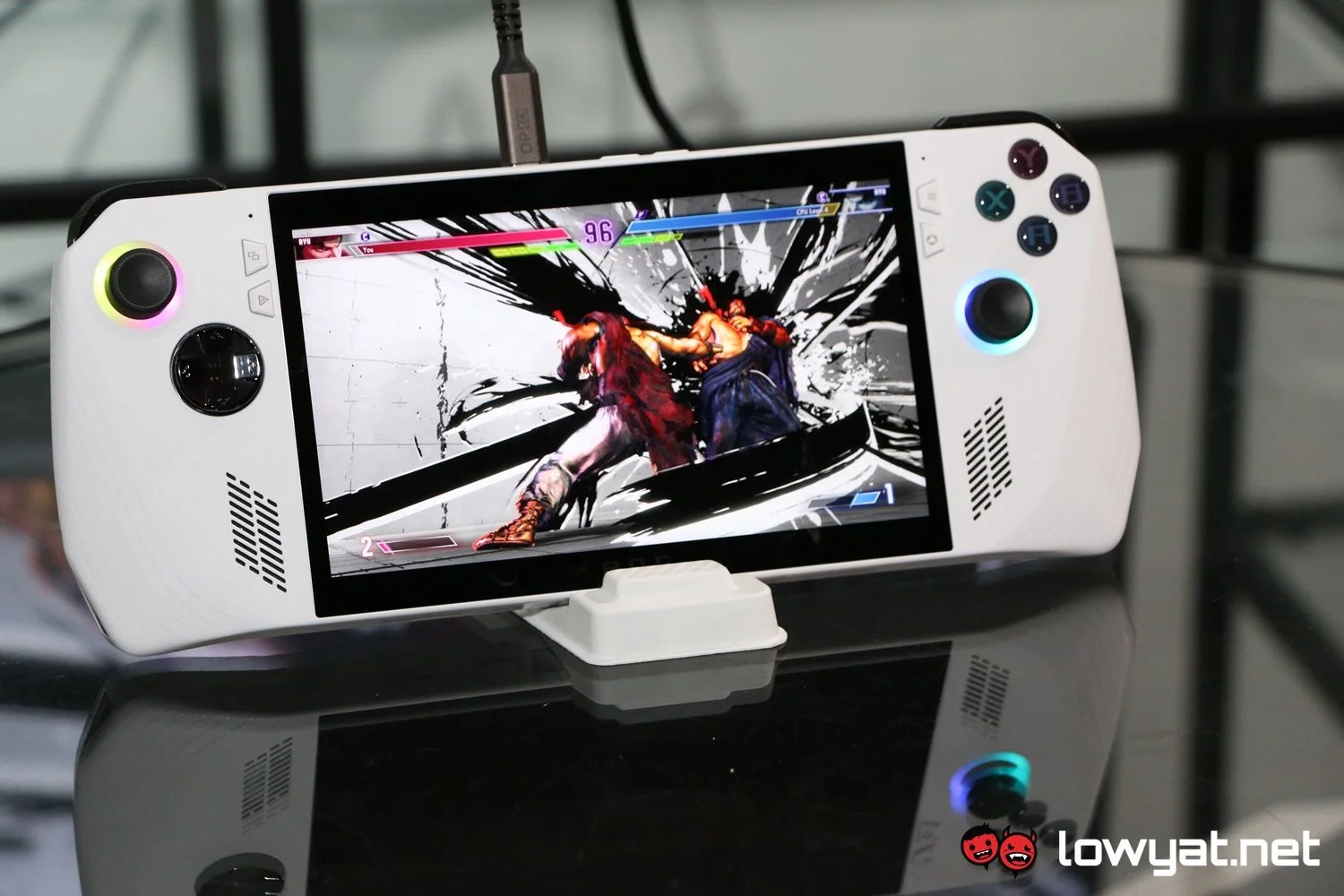I won’t spend too much time talking about the ROG Ally and its specifications. I’ve already done that in the previous article announcing the console’s official launch date, so you can read it there if you want a quick breakdown of the APU that makes this console tick. Instead, I’m going to talk about how it feels, as well as how it performs.
The ROG Ally is deceivingly thick despite its more compact form factor.
The first thing I will say about the ROG Ally is that it feels rather “chunky” in my hands. As a person who owns a Steam Deck, this statement may come off as a bit odd, given the difference in size between the two, but hear me out. While the Ally is thinner and visually more compact than the Deck, it is the grips of the former actually add to the console’s girthy texture. But put side-by-side with the Deck, you can actually see how much more compact it is, despite their displays being the same size and having more or less the same bezel thickness. Again, to evoke a certain level of drama, ASUS implies a lot of blood, sweat, and tears actually went into the ROG Ally’s design and I am inclined to believe them. the area where my palms would be when I am holding the portable console actually feels more comfortable and at rest, than they usually do with the Steam Deck. And that is because of the way the edges have actually been tapered off and truly, it is even more snug in my hands when I’m in a neutral position on a table. There is also the layout of the controller for the ROG Ally and the buttons at the top and around the back. As you can, the Ally employs the popular Xbox controller layout. Honestly, I’m more or less agnostic when it comes to controller preferences, so I’m not bothered by it. That being said, my colleague and friend actually had some choice words for the layout but again, to each their own. Still on the subject of the joysticks, they’re actually a little looser than, again, those on the Steam Deck. By that, I mean that there is significantly less resistance, which actually means that I either tend to overshoot my movements or I am being extra delicate and less heavy-handed with the right joystick, lest my aim overshoots as well. For another matter, the D-Pad on the ROG Ally feels clicky, while the XYAB buttons feel little more tactile. It feels a little odd, as I thought ASUS would have actually standardised the feedback all around. Adding on to that oddity are the shoulder buttons and triggers of the Ally. There is more resistance to the triggers, especially when compared to those on the Steam Deck. Likewise, the shoulder buttons produce a satisfying click with each press, and more importantly, both of them are easier to reach. Lastly, but equally as important, are the rear buttons, which there are two – one on each side. As you’d expect, these buttons are mappable to the in-game functions of your choice, but like the XYAB buttons, they’re more tactile but do produce a nice click when fully depressed.
That Ryzen Z1 Extreme SoC is no half-baked processor.
Let’s move on to the important part of the ROG Ally: gaming on it. Now, unfortunately, ASUS wasn’t allowing me to show any real-time performance number, but I can tell you that the Ryzen Z1 Extreme SoC really does live up to its hype. I stuck with one game throughout while horsing round, Cyberpunk 2077 – unfettered in framerates, and with the in-game graphics set to a mix of low and medium, and at 1280 x 720, the handheld console was hitting 70 fps on average, and that was with the TDP hovering just above 27W. This, and the fact that it was running on battery, is a mindblowing experience. Even when I capped the framerate via the onboard ASUS Armoury Crate overlay to 45 fps, it was powerful enough to just run in consistently at that cap. The Steam Deck with these identical settings, along with a frame cap of 40 fps, isn’t even able to hold at that self-imposed ceiling, capping out at 30 fps. One other plus point of the ROG Ally is the noise of its internal cooling solution or lack thereof. Even when running on a full load, that dual Intelligent Cooling system was barely audible, almost down to a whisper. As for the heat being dissipated, you don’t even feel it within or around the console, simply because any air sucked in through the rear is instantly evacuated through the top of it and honestly, you’ll only feel it if you place your hands on top of it.
There is still a lot more that I wish to test out with the ASUS ROG Ally, from how it runs as a Windows 11 machine, to finding out if ASUS managed to optimise the switching between app function of its custom Armoury Crate overlay, and how much of a boon it receives when it is docked with an XG Mobile eGPU. Sadly, it looks like that I’ll only be able to do sometime after its official price announcement on 11 May. Honestly, the representative may have let slip a confirmation of its leaked US$699.99 (~RM3105) price tag but that’s still just the global pricing and not local. In any case, I definitely want to conduct an in-depth review of the console. Photography by John Law.
